Don’t ever ask a Sámi person how many reindeer he owns. It’s about as polite as asking someone in Britain how much cash he’s got in the bank. But enquire after the health of his reindeer, or which are the ‘stand-out’ specimens in his herd of between 300 and 1,000, and you will be fine. In fact, get ready for a detailed response from someone whose Arctic community often still lives symbiotically with its animals.
Racing reindeer has been popular among Sámi people for hundreds of years, but began receiving wider attention in 2005, when the Midnight Sun Marathon organisers and the Sámi Valáštallan Lihttu sporting body arranged the first championships to be run in Tromsø in Norway. Since then, only Covid has stopped the event from taking place in northern Norway’s largest city every February.
On a recent Sunday, I was among an international group of more than 2,000 people, mixed with traditionally dressed Sámi folk, lining a closed street in Tromsø, 220 miles north of the Arctic Circle. All of us watched rapt as eight adult and four junior reindeer hurtled across snow, harnessed with long reins at the end of which jockeys crouched on skis.
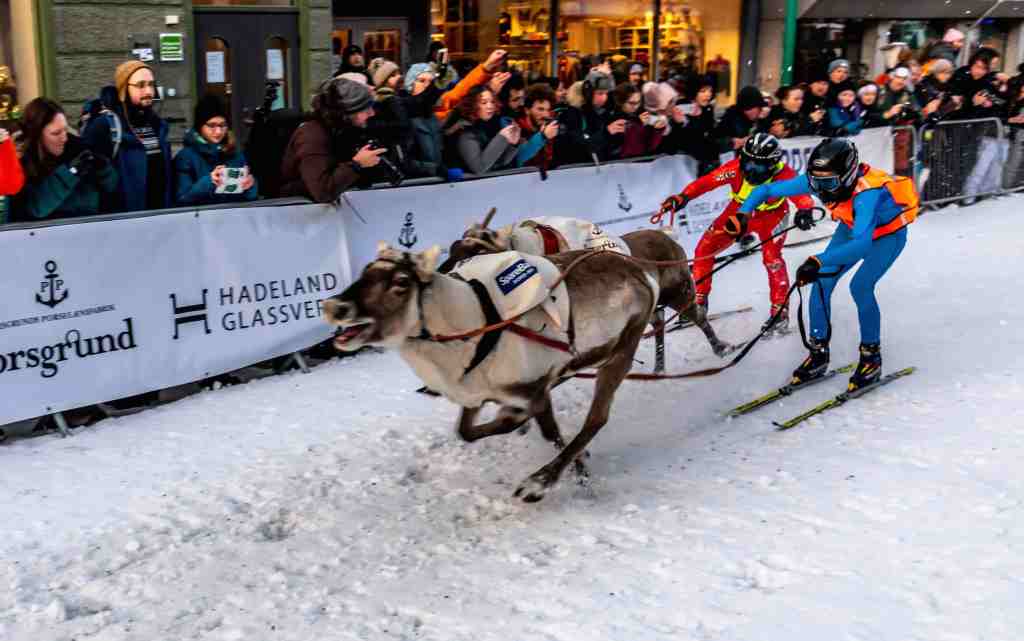
The races are fast and furious across four heats. The reindeer move at speeds of up to 30mph, in a cloud of snow and ice, with just 201 metres to a photo finish. Needless to say, the job of reindeer jockey is not for the faint of heart.
This year wasn’t the first time Lemet Asllat Eira’s Sámi family had won the race, but it was the first win for their top reindeer, Vielggut. The family was delighted – both with the recognition and with the 20,000 kroner cash prize. Reindeer racing is a high-stakes sport.
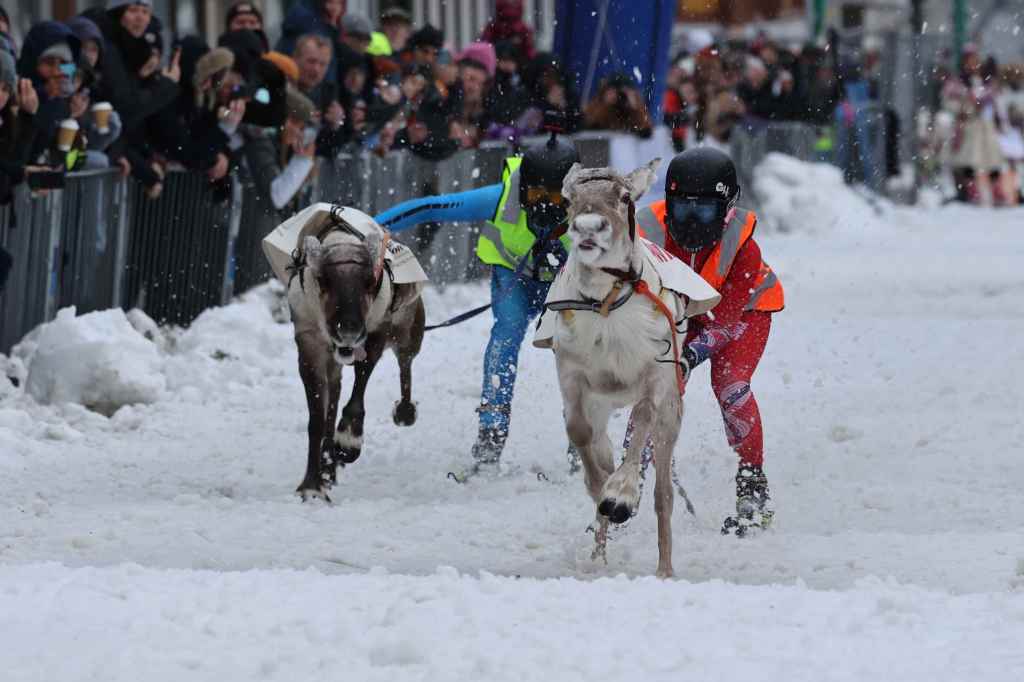
For the visitors coming from out of town, it’s a dramatic experience in sub-zero temperatures, with spectators often battered by driving wind and sleet. It’s bitterly cold but utterly extraordinary to watch reindeer skittering past in a flash of colour against the snow. There’s plenty more to do in Tromsø once the race is over – but attending the event also offers much more than just the thrill of the race itself. Once the reindeer had passed, I stayed at the barrier to join in the spontaneous Sámi joik songs being sung up and down the line, and then followed everyone diving into the steamy Burger King and other cafés which line the street and historic market square.
While the casual visitor to Tromsø may think the reindeer racing championship is little more than a once-a-year affair, the Sámi people know it takes generations of experience to identify young reindeer with racing promise. The chest width suggests good lungs, the body length a bounding stride but mostly, according to Johan Martin Johansen Eira, from Aidejavin, Kautokeino, it’s about the animal’s mindset. Johan’s Sámi family goes back ten generations. ‘We were here in Norway in the 1500s, before anyone else,’ he says, ‘when reindeer was one of the earliest forms of transport.’
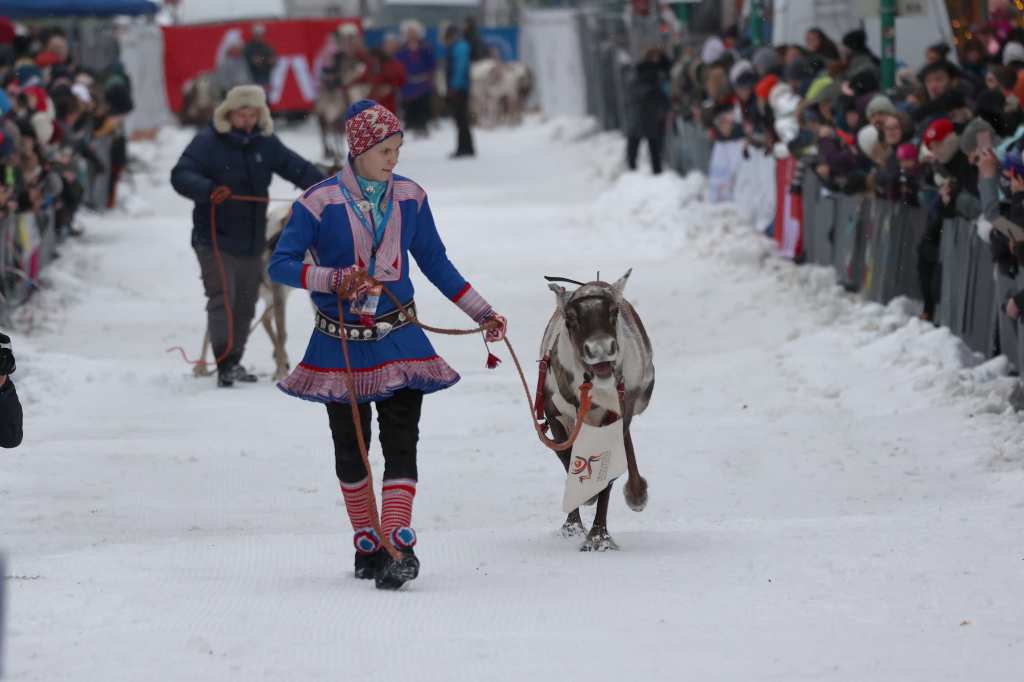
The Sámi community is found northern Norway, Sweden, Finland and Russia, with northern Norway home to the largest group. There are nine very different dialects spoken among approximately 80,000 people. While a Norwegian Sámi would not understand a Sámi from Russia or central Sweden, they know exactly who they are and where they are from by the layout of red, yellow and white on the hem of their tunics. Like a tartan, the arrangement of the coloured hem donates tribe and region.
Known as gákti, men’s tunics reach to their hip and women’s to the knee. They are a statement of place and belonging, worn both for ceremonial events and in day-to-day life, particularly when herding reindeer. Silver is also regularly seen as it holds a superstitious significance for Sámi people. They make sure to have silver around newborn babies’ cribs to ward off evil spirits, and women wear a vast array of shiny silver necklaces – a demonstration of prosperity as well as a talisman against evil. While the Sámi people have fallen victim to racism and marginalisation in times gone by, these days their culture and languages are seeing growing recognition.
I met Johan’s wife, Marja Elise Mathisdattek Haaetta Eira, selling reindeer meat with her husband in the Tromsø market on the day of the reindeer racing championships. Wearing warm wool clothing and a topcoat made from reindeer hide, she described how each part of the reindeer is used to ensure nothing goes to waste (reindeer boots, for example, are apparently unbeatable for warmth).
Johan’s family’s herds are kept in Finnmark for six months and in the hills above the Tromsø coast for the rest of the year. Sámi people follow their reindeer as they pursue better pastures, and they stay with the herds to protect against predators – which can include reindeer hustlers from other families as well as bears, lynx, eagles and wolves.
But their centuries-old practices are facing some very modern challenges. Reindeer are having difficulty finding food because of dramatic variation in temperatures – and because of the development of wind power.
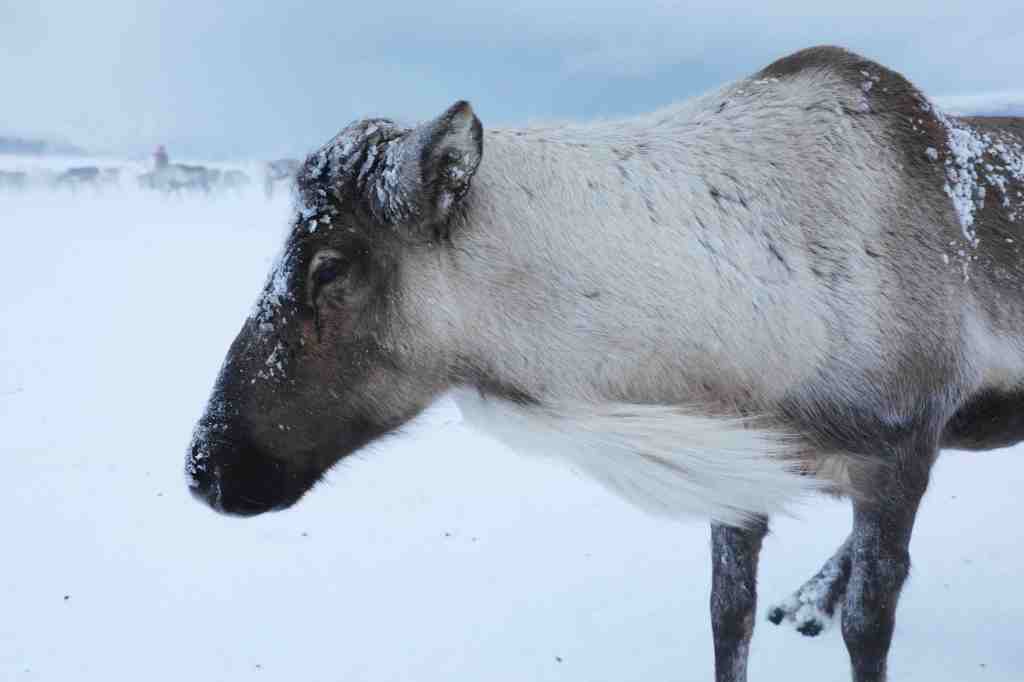
Marja said: ‘One day it is minus 35 degrees outside, and the next it’s plus five. When snow refreezes, it creates an ice barrier which prevents reindeer accessing food. There is an additional danger to the animals whose coats ice up, causing a decrease in oxygen.’ For this reason, many reindeer herders stick to lower hills, where they can feed their reindeer through tourist ‘Arctic adventure’ revenue.
The push for renewable energy is also having unexpected consequences. Britt Somby from Sámi Valáštallan Lihttu, which promotes Sámi cultural heritage, said: ‘The new threat that reindeer herding faces is the development of wind power. Energy and climate policy… has a major focus on wind power, entailing extensive physical interventions with major consequences for the reindeer grazing areas. There is less and less grazing land, and the habitats for the reindeer are restricted.
‘New research shows that wind turbines frighten reindeer. During the calving period, the herds largely give birth in areas where the turbines are not visible. The movement patterns of the reindeer have been changed and as the migration pattern changes, the living areas become even more restricted. This can also lead to an increase in the level of conflict within the reindeer herd, since the reindeer herd can interfere with neighbouring herds.
‘This is a policy that is difficult to reverse. The Norwegian state uses arguments such as “If Europe is to meet its climate goals, Norway must contribute”. This happens at the expense of reindeer herding, and the suppression of the Sámi culture.’
For the Sámi people, a new race is on to protect their livelihoods and their heritage – and the stakes in this one are higher than ever.

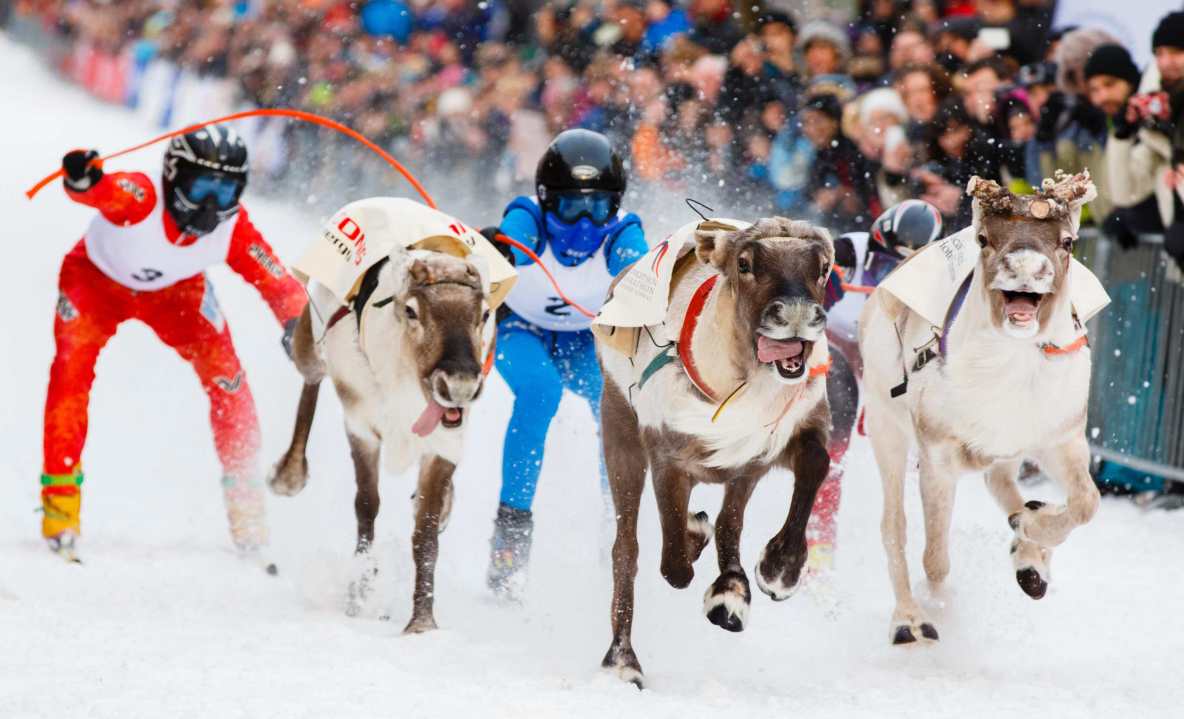
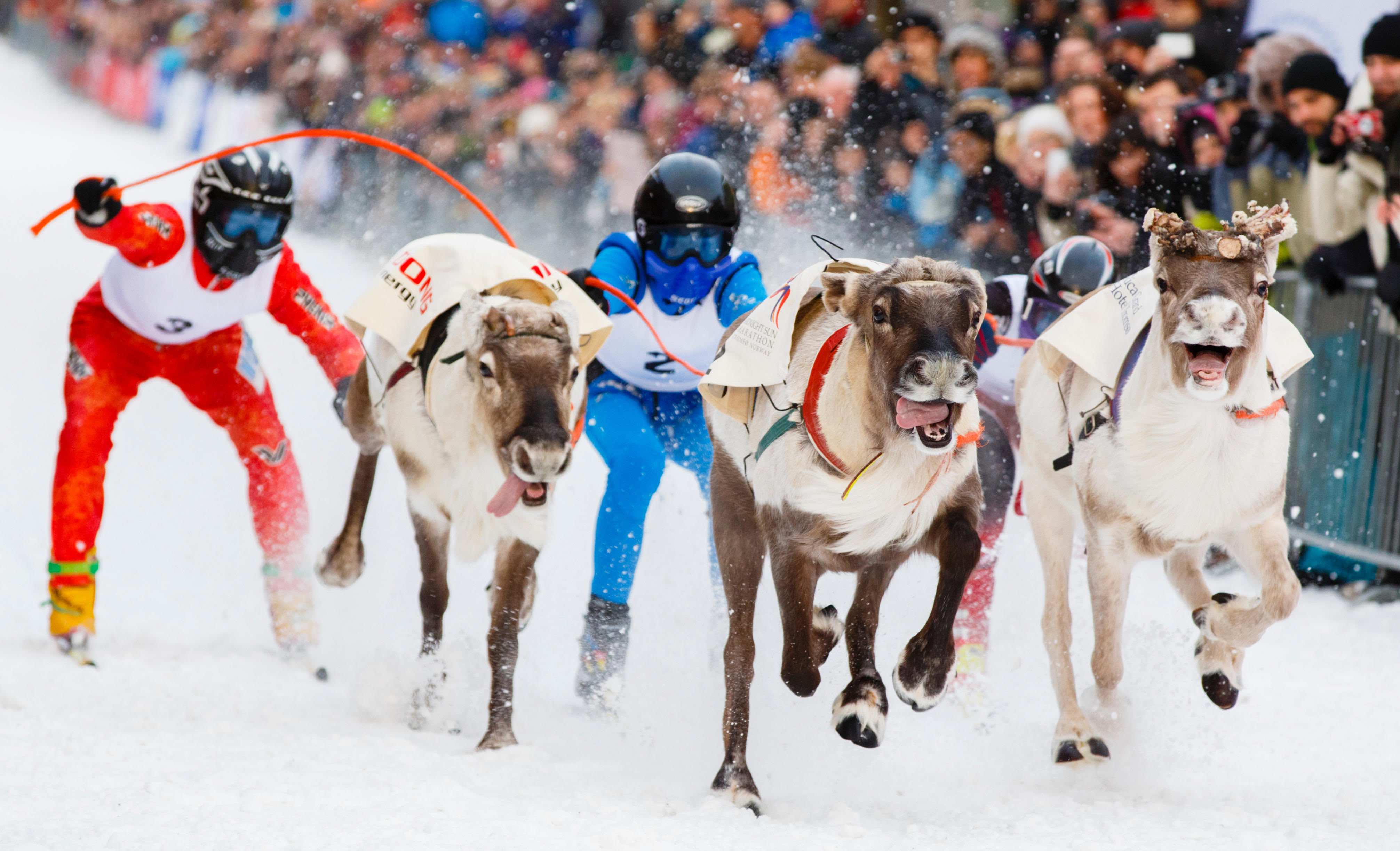




Comments